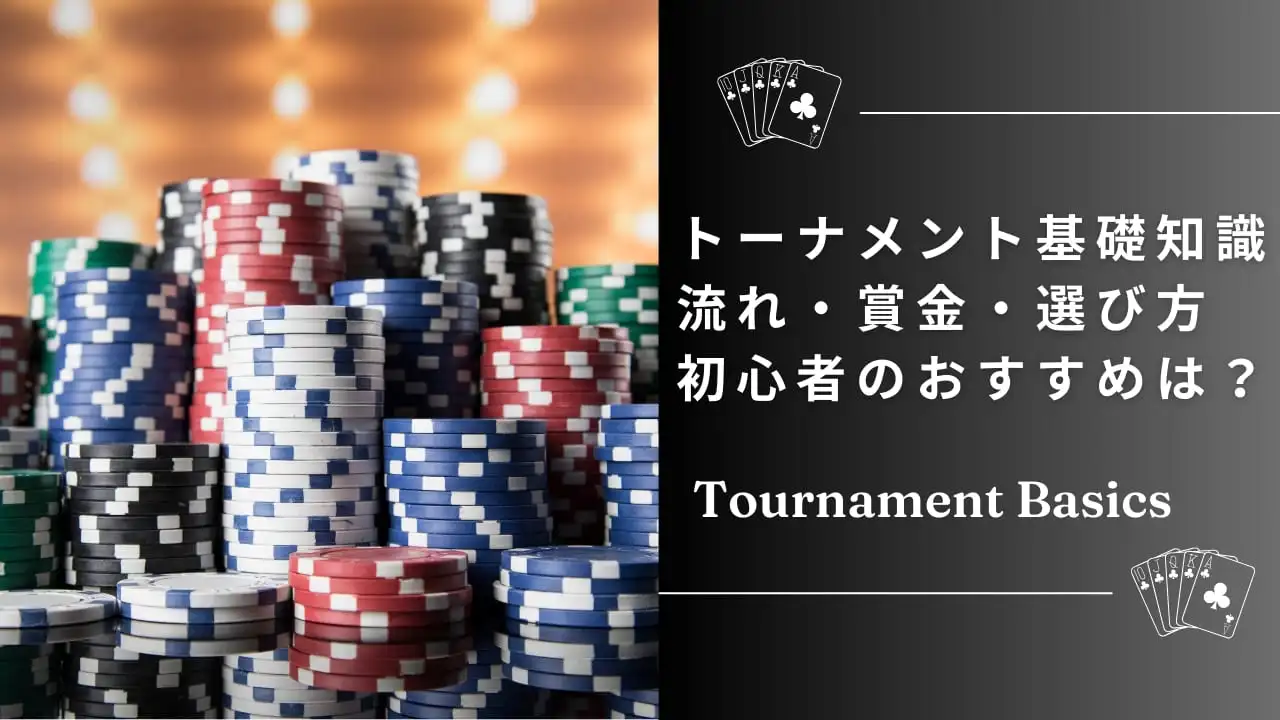Poker tournaments are a popular format of competitive poker where all players start with the same amount of chips after paying a fixed entry fee (buy-in). The goal is to accumulate chips and outlast other players until a single winner remains. Prizes are awarded based on finishing position, making strategy and survival skills key.
Unlike cash games, where players can rebuy chips anytime, tournaments eliminate players once they lose all their chips. This creates a dynamic and evolving game environment. In this guide, we’ll cover everything beginners need to know about poker tournaments—including rules, structure, blind levels, prize pools, and the differences between online and live formats.
Poker Tournament Rules & Structure
How a Tournament Works
- Every player pays a buy-in and receives an equal starting stack.
- Blinds (forced bets) increase at regular intervals.
- Players are eliminated when they lose all their chips.
- Tables merge as players are knocked out.
- The final remaining players enter the money (ITM: In The Money).
- The winner is crowned at the Final Table.
Tournament Phases & Key Components
- Buy-in & Registration
- Players register and pay a set entry fee.
- Everyone starts with the same chip amount.
- Players register and pay a set entry fee.
- Game Start & Blinds Increase
- Blinds increase every few minutes (e.g., 10, 20, 30 mins).
- Chip management becomes crucial as blinds rise.
- Blinds increase every few minutes (e.g., 10, 20, 30 mins).
- Player Elimination & Table Merging
- Players who lose all their chips are out.
- Tables consolidate as participants decrease.
- Players who lose all their chips are out.
- ITM & Final Table
- Top ~10–15% of players reach the money.
- The tournament concludes at the Final Table.
- Top ~10–15% of players reach the money.
Blind Levels & Structure
In tournaments, blinds go up over time, creating pressure and requiring adaptation. Here’s how it typically works:
- Blind Levels: Increase at fixed intervals (e.g., every 15 minutes).
- Antes: Introduced in the mid-to-late stages, antes are forced bets from every player, increasing the pot size.
- Stealing Blinds: As blinds increase, aggressive play to “steal” the blinds becomes more common and important.
Rebuy, Add-On, and Re-entry Explained
Many tournaments offer ways to stay in the game even after losing your chips:
Rebuy
Buy more chips during a specific time window after busting. Rebuy tournaments often start with smaller stacks to encourage early aggression.
- Available only for a limited time.
- Lets players rejoin with more chips.
Add-On
Purchase additional chips once, usually after the rebuy period ends.
- One-time option.
- Helps boost stack heading into the next phase.
Re-entry
Re-enter the tournament after elimination by paying the buy-in again. Unlike rebuys, this assigns a new seat.
- Treated as a new entry.
- Often used in larger or multi-flight events.
Prize Structure in Tournaments
In most tournaments, only a portion of players (typically the top 10–15%) earn a payout. There are three common prize structures:
- Top-Heavy Structure
- Most of the prize pool goes to the top finishers.
- Encourages risk-taking for bigger rewards.
- Most of the prize pool goes to the top finishers.
- Flat Structure
- More evenly distributed prizes across the ITM players.
- Less variance, safer approach for risk-averse players.
- More evenly distributed prizes across the ITM players.
- Bounty Format
- Earn a cash reward for knocking out opponents.
- Promotes aggressive, elimination-focused play.
- Earn a cash reward for knocking out opponents.
ICM: Independent Chip Model
ICM is a model used to assign real-money value to your chip stack in a tournament, especially in late stages.
- Short Stacks: Should play conservatively to survive into the money.
- Big Stacks: Can apply pressure and force others to fold, maximizing their edge.
Understanding ICM is critical for making profitable decisions in the endgame.
Online vs Live Poker Tournaments
Live Poker Tournaments
- Played face-to-face in casinos or poker rooms.
- Players can use body language (live tells) to read opponents.
- Sessions are often long, requiring focus and endurance.
Online Poker Tournaments
- Accessible from PC or mobile devices.
- Much faster pace with more hands per hour.
- Tools like HUDs (Heads-Up Displays) help analyze opponents.
Which Format Should You Choose?
Choose Online If You Want:
- Faster gameplay and more hands per session
- Convenient access anytime
- Data-driven strategy development (via HUDs)
Choose Live If You Enjoy:
- Face-to-face psychological warfare
- Reading live tells and non-verbal cues
- Immersive tournament experiences in real environments
Beginner Tips for Starting Poker Tournaments
- Start small with low buy-in tournaments or freerolls
- Practice proper bankroll management
- Learn key strategies like position, ICM, and blind pressure
- Use your early experiences to build confidence and skills
Best Tournament Formats for Beginners
- Freerolls
- No entry fee—perfect for practice.
- No entry fee—perfect for practice.
- Bounty Tournaments
- Great for learning aggressive strategies.
- Great for learning aggressive strategies.
- Turbo Tournaments
- Fast-paced, ideal for gaining quick experience.
Conclusion
Poker tournaments offer a thrilling and skill-intensive format for players of all levels. With the right preparation, understanding of rules, and strategic mindset, beginners can enjoy and succeed in this exciting arena. Start small, study smart, and may the chips fall in your favor!


